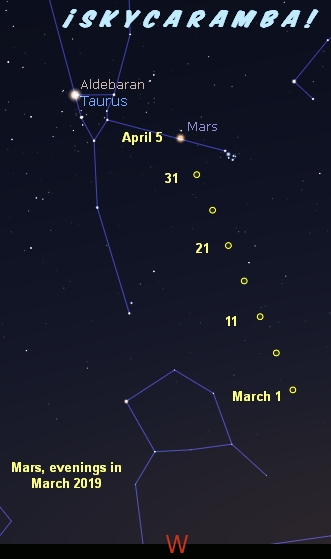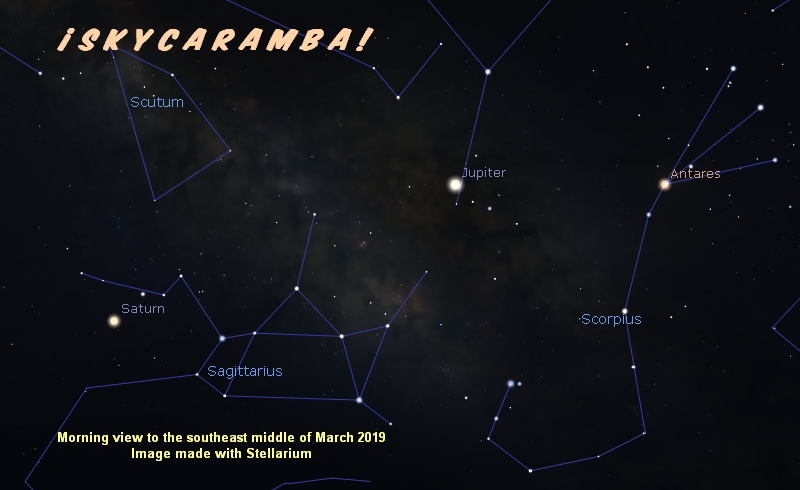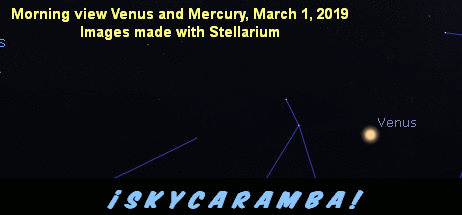Mercury begins our nightly parade of planets near the easternmost fish head of Pisces at the start of March. The messenger planet sinks into the sunset fast though. On the 7th, northern hemisphere observers will find it barely above the horizon with a slim crescent moon to the left. The planet is at inferior conjunction on the 15th.

Mars is higher in the west during the evening gliding eastward between Cetus the whale’s head and Aries. The moon passes by on the 11th. Toward the end of the month, the red planet is getting close to the Pleiades. It will pass between the Pleiades and the Hyades in April.

Venus, Saturn, the moon, and Jupiter are part of a morning lineup that’s been fun to watch since January. Jupiter and Saturn aren’t moving much during March. Venus is moving quickly eastward across the stars of Capricorn and then Aquarius. In the last few days of the month, you may notice Mercury has reappeared in the morning sky left of Venus. Start watching them now and enjoy a prolonged pairing in April.
Earth and Mars have equinoxes just days apart this month. Both are northward equinoxes. We don’t usually specify the direction the sun appears to be moving when describing the equinox on Earth. Since it is tied to our calendar, to call it the March equinox is enough. When we aren’t worried about being misunderstood by folks far away in another hemisphere, we in the north call it the spring equinox. Earth’s happens on the 20th at 21:59 UTC.

For Mars, a revolution around the sun is a little less than one year, eleven months as we reckon on Earth. So the Martian equinox doesn’t line up with our calendar. We must specify which equinox is happening on the red planet. The sun crosses the planet’s equator going north on March 23rd at 11:33 UTC.

The moon starts the month at southern lunistice 21.6° from the equator. It crosses the equator on the 8th, reaches northern lunistice on the 15th at 21.8°, and then goes south again on the 21st. A second southern lunistice is on the 28th at 21.9°.
Lunar apogee this month is on the 4th at 406,300 km. Perigee is on the 19th at 359,300 km.
New moon is on the 6th, first quarter on the 14th, full moon on the 21st, and last quarter on the 28th.
Some notable conjunctions this month
1st Saturn 0.3° from the moon. Viewers in the western Pacific will see an occultation.
2nd Venus 1.2° from the moon.
6th Vesta 0.5° from the moon.
7th Neptune 1.0° from the sun
7th Mercury 7.9° from the moon
10th Uranus 4.6° from the moon
11th Mars 5.5° from the moon
13th Moon 1.9° from Aldebaran
15th Mercury 3.5° from the sun. This is an inferior conjunction (the planet is between Earth and the sun).
19th Moon 2.5° from Regulus
26th Ceres 2.7° from the moon
27th Jupiter 1.9° from the moon
29th Saturn 0.1° from the moon. Viewers in the southern Atlantic will see an occultation.


None of our major planets are at aphelion, perihelion, greatest elongation, or opposition this month.


